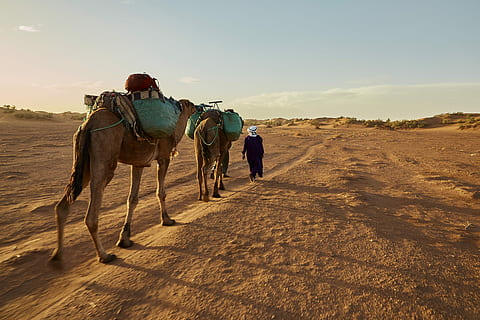Society
7.13.2020
Saudi Arabia opens world’s largest camel hospital

To help preserve these animals sometimes considered as the “vessels of the desert”, Saudi Arabia inaugurated last Sunday a giant hospital specially dedicated to the care and study of camels. Back on this pharaonic project.
A huge complex to care for camelids
This Sunday, in Buraidah, a city 200 kilometers north of Riyadh, there was unusual unrest. The presence of Prince Faisal bin Mishaal, a high-ranking official of the Saudi General Staff, was probably not a factor. It was indeed he who had the honor of inaugurating what is now the largest hospital center dedicated to camels.
Largest camel hospital in Saudi Arabia. Equipped with veterinary, research facilities, hospital can accommodate 4,000 camels https://t.co/ZZQASk4Eos
— Abdul Hamid Ahmad (@AbdulHamidAhmad) July 5, 2020
And the least that can be said is that the builders of the building have given themselves the means to achieve their ambition. The center will be able to accommodate more than 4,000 camelids within its walls! With a gigantic surface area of 70,000 square meters, the complex was very expensive to build: its final cost is estimated at 100 million Saudi riyals, which is like about 25 million euros.
Gigantic laboratories to advance research
At the cutting edge of technology in both health research and epidemiology, the new sanitary facilities should make it possible to improve medical knowledge of these animals and to develop treatments to cure and prevent diseases specific to their species. The establishment’s specialized central laboratories are equipped with modern equipment enabling more than 160 different types of analysis to be carried out.
Saudi Arabia opens world’s largest camel hospital https://t.co/xeg7uZWjYO pic.twitter.com/HOEetgFQFc
— The National (@TheNationalUAE) July 7, 2020
This new complex should above all help to advance medical research on camelids, in particular embryology and the traditional fertilization process camels, whose age varies between 25 and 30 years. The study of camel fetuses, which will inevitably be more numerous due to the large volume of animals that the center can accommodate, will also keep the research teams sent to the center intensively busy. The hospital should thus be able to study no less than 700 fetuses within a few years, compared to 100 at present.
See also
New horizons for Camelspopular

